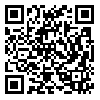BibTeX | RIS | EndNote | Medlars | ProCite | Reference Manager | RefWorks
Send citation to:
URL: http://rehabilitationj.uswr.ac.ir/article-1-683-en.html
Objective: Cerebral palsy (CP) is a non-progressive disorder and abnormality of the developing brain and it remains one of the main and prevalent causes of childhood developmental disorder. This study was carried out in order to recognize the types and associated disorders of children with cerebral palsy.
Materials & Methods: This study was conducted on one to six years old children with cerebral palsy in eastern and northern districts of Tehran and the European classification of cerebral palsy was used for classification. Participants were evaluated by medical and rehabilitation team and associated disorders were classified based on symptoms such as epilepsy, speech and language disorder, visual problems, hearing disorders, and cognitive developmental delay.
Results: In this study, 112 children with cerebral palsy participated. The mean age was 33.3 months for boys and 24.8 months for girls. The prevalence of cerebral palsy were 36.6% in children with unilateral - spastic cerebral palsy 43.7% in bilateral–spastic (diplegia in 31.2%, and quadriplegia in 12.5%), 13.4% in ataxia and 4.5% in dyskinesia. Speech and language disorders were observed in 33%, epilepsy in 30.4%, strabismus in 16.1%, hearing loss in 8%, and mental retardation in 7.1% of participants.
Conclusion: In this study, unilateral - spastic cerebral palsy was found as the most common type. Therefore, more evaluation to determine the about etiology of this type of cerebral palsy in our population is necessary.
Received: 14/11/2010 | Accepted: 18/12/2013 | Published: 18/12/2013
| Rights and permissions | |
 |
This work is licensed under a Creative Commons Attribution-NonCommercial 4.0 International License. |





